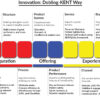
In the complex arena of healthcare, wherein compassion and commerce intersect, financial savvy is not just a nice-to-have competency—it’s necessary. Smaller and mid-size hospitals, especially those in resource-constrained settings, have to grasp that sustainability does not just lie upon clinical expertise or altruism, but financial solid ground. One of India’s most respected financial educators, Dr. Anil Lamba, offers an astute comment, one which has great value in healthcare entrepreneurship: “Successful businesses have two pillars—the capacity to earn profit and the capacity to manage cash flow efficiently. The loss of either can prove to be fatal.”
This lesson applies most directly to private hospitals in Indian tier-2 and tier-3 cities, whose margins are thin, patient volumes uncertain, and reimbursements under government and insurance programs haphazard. In these circumstances, a hospital can be too busy performing good medical work and still not remain viable if its financial base is shaky. These two foundations—profitability and cash flow—do not exist in an accountant’s lexicon. They are the double blood vessels that keep a hospital alive, responsive, and able to perform its mission.
Now, let us understand how important it is to earn profit in a hospital. The term “profit” incidentally also has an unwelcome connotation in medicine, and it has been presumed to be incompatible with caregiving culture by some. Yet, in practice, profit is not exploitation; it is sustainability. It means a hospital can spend money on better infrastructure, better diagnostic machines, better training of people, and better outreach through added services to reach more people. Without earning profit, it becomes impossible for a hospital to withstand jolts from outside—be it pandemic, policy change, or patient downfall overnight. It’s profit, which helps people in a hospital be treated without compromising on quality and safety.
The ability to generate profit, not to generate excessive revenue, is to pay fairly for services rendered, keep down expenses, and minimize operational inefficiencies. One can, for instance, have small General Surgery centre offering daycare procedures like Appendicectomy or Cholecystectomy generate good margins through rapid turnover and negligible utilization of resources. One can also have hospital, through periodic audit of departments, identify poorly performing departments and align its services mix to deliver best outcomes. What’s essential is to have hospital leaders, even those who consider themselves as “non-finance persons,” own knowledge of points at which hospital generates revenue and from which it leaks.
However, profit in isolation is not adequate. The hospital can be profitable on paper and still fail if it doesn’t work effectively in terms of cash flow. Cash flow can be described as the timing of money coming in and going out of an enterprise. In Indian healthcare, especially in private practice, paybacks from the insurance players, government health schemes, or by third-party administrators are delayed and not expedited as paybacks. The delays can create an acute receivable and payable mismatch. Salaries, electricity bills, and payments to vendors do not take time to order themselves. When inflows are languishing and outflows are due, there occurs a cash crunch and resulting dissatisfaction in staff, supply, and deterioration in reputation.
Effective cash flow management requires vigilant monitoring and forethought. Hospitals have to keep an eye on receivables and claims at least once every week, align payment days with inflows, negotiate terms of payables from vendors, and maintain an emergency fund as well. As an instance, a multi-specialty hospital in north Karnataka suffered through 4 to 6 months’ lag in reimbursements under one government scheme. While it was financially profitable on an operational level, the cash lag caused sheer distress—fees to doctors could not be paid on time and upgrading needs kept being put on hold. In contrast, one Bangalore-based, standalone Gastrointestinal surgery center, maintaining vigilant daily cash flow watch, promoting niche services, and limiting high-value purchases to needs-based decisions, has gradually grown and remained healthy financially.
Understanding these two foundations also helps to shed light on errors common to small hospitals. Far too frequently, small hospitals fall victim to overexpansion, going into hock to build new wings or acquire expensive gear prior to establishing a stable patient revenue stream. One paediatric hospital in Andhra Pradesh, for instance, added a new NICU paid for out of borrowed funds but did not generate sufficient patient load to justify increased expenses. As much as they wished to do good, financial distress resulted from the resulting EMI burden. These sorts of cases confirm why profit and cash flow must be evaluated together—not as mutually exclusive ends but as mutually interrelated truths.
Globally, revenue cycle management systems in countries like the U.S. have helped hospitals to automate billing, reduce claim denials, and extract maximum profit and cash flow. Indian hospitals, short of reaching this stage of automation, can still apply essential practices like submission of claims in time, correct documentation, package pricing, and costing of service lines to achieve similar results at large scales.
Moreover, health specialists also have to abandon their misconception of finance as another person’s business. As medical director, operating surgeon, or administrative director, your ability to deliver informed financial decisions not just affects the hospital’s balance sheet, but patient caregiving, too. Knowing one’s services’ break-even point, knowing one’s cost per procedure, and having one’s ability to estimate one’s monthly cash flow counts as much as clinical audit or infection control meetings.
The lesson of Dr. Anil Lamba’s experience is simple and freeing: Control your profit and cash flow, and most other variables will take care of themselves. In small hospitals, and especially in states like Karnataka, this way of thinking can be the difference between survival and shutdown, stagnation and healthy growth. Hospitals aren’t temples of healing, they’re institutions that must keep themselves economically healthy in order to stay healthy for society in general. Establishing those two financial pillars isn’t an option; it’s a necessity. If you’re running or planning to run a small hospital, start here: Do we have profit at the end of it all? And do we have control over our cash flow? The answers could determine your hospital’s future more than your next purchase of equipment or marketing campaign.
Dr. Prahlada N.B
MBBS (JJMMC), MS (PGIMER, Chandigarh).
MBA in Healthcare & Hospital Management (BITS, Pilani),
Postgraduate Certificate in Technology Leadership and Innovation (MIT, USA)
Executive Programme in Strategic Management (IIM, Lucknow)
Senior Management Programme in Healthcare Management (IIM, Kozhikode)
Advanced Certificate in AI for Digital Health and Imaging Program (IISc, Bengaluru).
Senior Professor and former Head,
Department of ENT-Head & Neck Surgery, Skull Base Surgery, Cochlear Implant Surgery.
Basaveshwara Medical College & Hospital, Chitradurga, Karnataka, India.
My Vision: I don’t want to be a genius. I want to be a person with a bundle of experience.
My Mission: Help others achieve their life’s objectives in my presence or absence!
My Values: Creating value for others.
Leave a reply
















Dear Dr. Prahlada N.B Sir,
Your insightful blog post on the importance of profit and cash flow for small hospitals resonated deeply. I particularly appreciated the emphasis on balancing clinical expertise with financial savvy. Your advice on starting small, monitoring cash flow, and expanding judiciously is invaluable for new hospital setups.
The real-world examples you shared highlighted the critical role of financial management in ensuring sustainability. I look forward to reading more of your thoughts on healthcare management.
ReplyThanks for writing this informative post. Many people keep searching for <a href="https://www.investkraft.com/blog/money-earning-apps-without-investment">money earning apps</a> but often end up on fake or unreliable sites. Your blog clears that confusion in a very simple way. I believe anyone looking to earn online should definitely try platforms that are transparent and easy to use. Along with apps, I’d also recommend checking out the <a href="https://www.investkraft.com/partner">InvestKraft Part ner Program</a>, as it’s another great option to earn consistently without investment. I appreciate how your article spreads awareness and gives practical solutions for 2025. Looking forward to reading more from you.
Reply